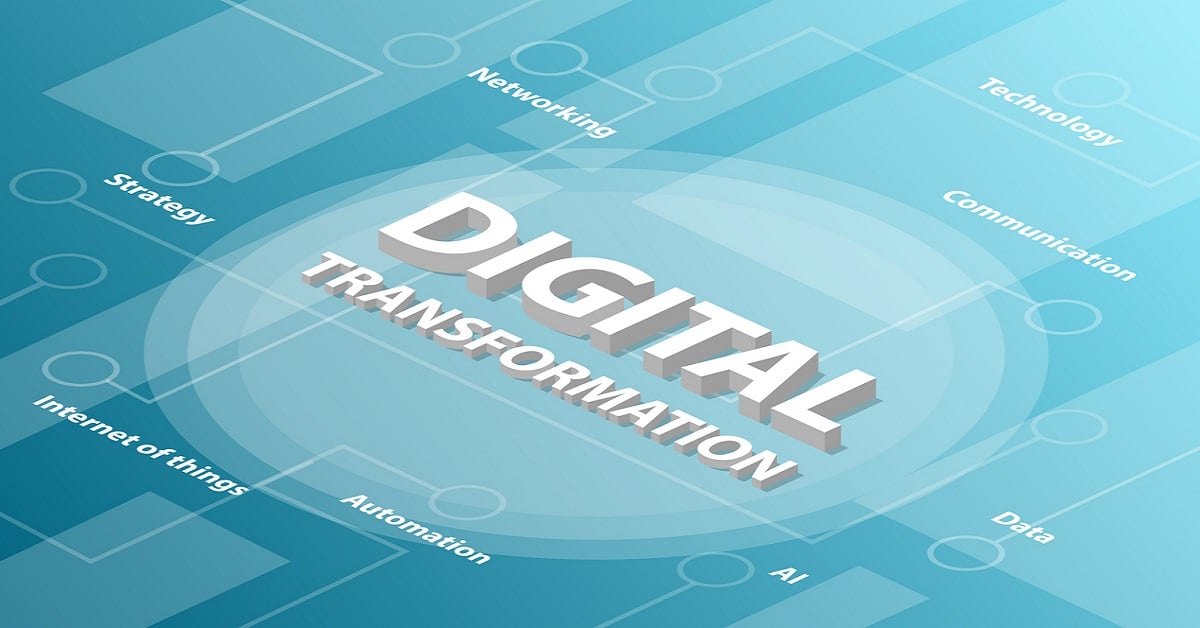Harnessing the Power of Digital Transformation
Change is amongst us, we must embrace the new digital era and rather than see change as a challenge, reverse those views and see it as an opportunity to grow and expand. It’s a fact that Digital Transformation (DX) is at the top of every companies to do list. Whether that be a partial or full DX change, companies today are facing a dilemma; don’t change the way we work and the infrastructure we use or be left behind in a fast-changing world. Today, we face a couple of big challenges, staying ahead and on top of new technologies but at the same time provide outstanding customer experience. To be clear, DX is the process of using new or modified business processes to meet the changing business and market requirements by the use of new and advanced technology.

When considering a DX change, you also need to change the way you and your organisation think and how you need to approach the new world. However, don’t be fooled that this only applies to IT systems, DX will affect every area of your organisation, transforming your business by changing the company business strategy, operating model, IT operations, products you use and your marketing approach. All this is achieved by adopting digital technologies. This will ultimately accelerate sales and growth of the business from end to end.
To achieve success, there are a few simple steps you can take to ease the transition. No one is saying DX is easy, nor are there any expectations that existing teams will have the experience or capabilities to drive this change forward. So new thinking needs to be applied early in the change lifecycle along with taking a realistic view of what the future will look like.
To start with, you’ll need to look at the people within your organisation, especially the leaders. Are they the right people for this exercise, do they have the right experience and are they 110% bought into the idea of change? Having the right, digital-savvy leaders in place is paramount to success, leading from the front should be done by your senior staff. If this is not possible, then be brutal and get a new team specifically in place to lead this exercise. It is far too important not to get this first piece right, failure to do this will result in … drum roll… the project will over-run, over-spend and the change will not be delivering the full future benefit.
You also need to look into the future and imagine the new world, what does it look and feel like, what will the people within your organisation be doing and how will they be doing it? Think about this early in the DX programme and start to build capabilities for the workforce of the future.
Training your team to work in new ways and getting their buy-in to the new processes and procedures that DX will bring is, as you can imagine, vital to the overall success. Not only do you want the benefits of all the new technologies, but you want the change to bring opportunities and better working practices to your teams. Empowering people to work in new ways can only have an uplifting impact and bring positive results.
An important element of Digital Transformation is, of course, technology. But often, it's more about shedding outdated processes and legacy technology than it is about adopting new tech. Around 70% of IT spend is spent on keeping old tech and legacy systems alive. This is enough to warrant a change to new tech. Examples like these spans all industries, and the prevalence of legacy technology hinders a company’s ability to successfully embark on a Digital Transformation strategy.
Without wanting to state the obvious, information and communication flows across digital technologies in such a way to create new and exciting opportunities for digital value that weren’t possible just a few years ago. Digital technology integration uses technology like mobile devices, smartphones, tablets, digital cameras, social media platforms, software applications and of course the Internet. Successful technology integration is achieved when the use of technology is robust but easily accessible and to use, but at the same time supports the goals of the company and demands of the end user. When technology is being used and information is relevant, useful and to hand then you become more actively engaged with the process and that is the point that technology has delivered.
And last of all, communicating frequently from start to finish to all affected parties is key, a well-informed workforce will embrace the change better than those who have change thrust upon them without the insights into what the change will bring nor what the benefits are to them or the end users. It’s essential to focus on delivering an excellent user experience throughout the programme of change and this can be easily achieved by setting up frequent progress meeting, newsletters, education sessions and by promoting positive events as and when they happen.
If you are about to embark on or are considering a digital change to your technology then you are not alone, and although I’m sure you've read how enabled some companies are, the majority of others are still on a journey and discovery into a new world of possibilities.
Don’t underestimate that Digital Transformation is a massive undertaking, and even more so for the multinational. When done right and by following simple steps as obvious as some may sound, it will produce a business that is more aligned with customer demands and resilient in the fast-moving digital future.
White Paper
Download our 'Top 5 Testing Must Do’s' white paper on testing within a digital transformation journey to find out more.








.png)
